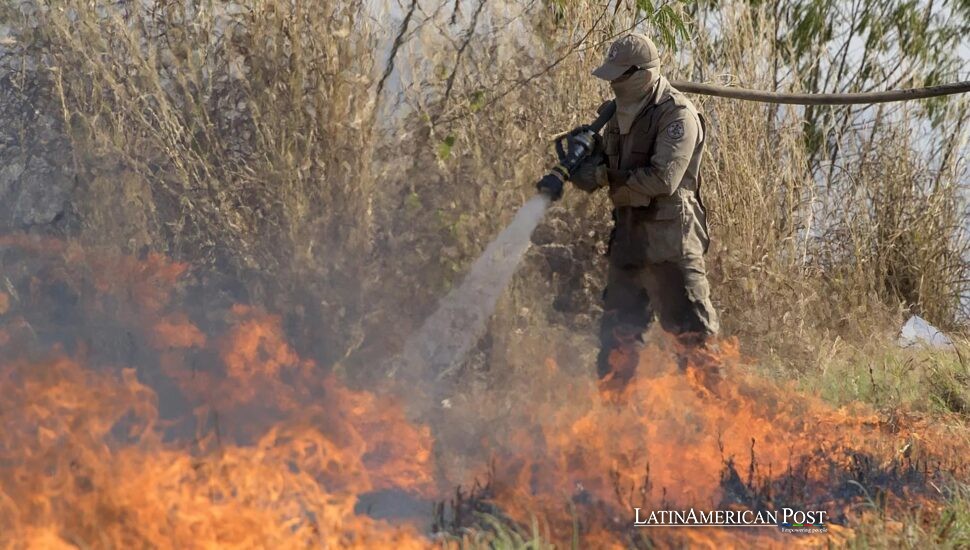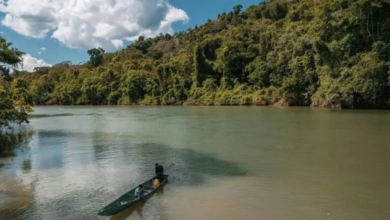Brazil’s Amazon Fire Fight: From Confrontation to Cooperation

Brazil has achieved what once seemed impossible: reducing Amazon forest fires to their lowest level in more than twenty years. The shift comes after a devastating 2024 season, a friendlier climate, and a surprising strategy that replaced confrontation with cooperation.
Learning From Disaster
The year 2024 scarred the Amazon like few others. More than 156,000 square kilometers—an area twice the size of Panama—went up in smoke. It was the largest scorched expanse since records began in 1985, fueled by record drought and blistering heat. Because the Amazon is a humid forest that does not ignite naturally, nearly every blaze was artificial: some sparked by carelessness, others deliberately set to clear land for cattle and crops.
“It was critical, putting out one fire and running to the next,” recalled firefighter Vinícius Souza, 24, describing to EFE nights spent chasing flames until dawn. For many, it was a terrifying glimpse of what an unchecked Amazon fire season could mean—not only for Brazil but for the global climate.
Faced with devastation on that scale, authorities had no choice but to reassess their approach. In Pará, the vast Amazonian state preparing to host the COP30 climate summit this November, the Instituto Chico Mendes de Conservação da Biodiversidade (ICMBio) decided to try something unusual: treating small farmers not as offenders, but as allies.
A New Kind of Ally
In Parauapebas, on the edge of the 1,200-square-kilometer Serra dos Carajás reserve, the air smells faintly of smoke. But here, the flames are controlled. Instead of punishing farmers who burn fields to fertilize, ICMBio brigades now work alongside them to promote sustainable practices.
They visit farms, listen to producers, and even provide drip torches filled with carefully mixed fuel. “Hold it a bit longer, like this,” instructed fire chief Manoel Delvo, 61, guiding a farmer as colleagues used blowers to keep flames from drifting into nearby forest.
Trust, Delvo admits, was hard-earned. “Before, there was mistrust. Now, we’re working in a more friendly relationship and the conflict has reduced,” he told EFE. For years, farmers saw inspectors as adversaries—bureaucrats who fined them for practices they considered essential. Now, some request ICMBio’s help directly, asking for safer burns.
Delvo jokes about his preference: “It’s worse to fight a wildfire in the jungle. I’d rather work less.” But behind the humor lies a profound truth: prevention is safer, cheaper, and far more effective than battling infernos once they rage.
The Numbers Behind the Turnaround
The results are striking. So far this year, Amazon fire outbreaks have decreased by 81 percent compared to the same period in 2024—from 102,000 hotspots to just over 19,000. It is the lowest figure since Brazil began systematic monitoring in 1998.
Researchers caution that good fortune played a role. Amazon scientist Ane Alencar told EFE that heavier-than-usual rains during the dry season were the most significant factor. But she also credited government action: “Monitoring against deforestation has intensified, and that discourages the use of fire.“
The federal government expanded its environmental firefighting force by 26 percent, now totaling 4,385 personnel. It purchased new aircraft, increased penalties for illegal burning, and maintained active patrols in deforestation hotspots. Still, Alencar warned, these numbers remain small compared to the immensity of the rainforest. “It is not enough for the territory we’re talking about,” she said.
Fear also mattered. After last year’s disaster, many farmers lost entire pastures and herds. “That generates a feeling of greater caution,” Alencar explained, which may help explain why producers are now more willing to collaborate with state brigades.
Fragile Progress and Future Challenges
For now, the rains have forced Delvo’s crew to suspend controlled burns, but his phone continues to buzz with requests. “I just received a message from another farmer,” he said, visibly satisfied. Each call is a sign of growing trust—and perhaps of a cultural shift in how fire is handled in the Amazon.
But no one pretends the danger has vanished. Fire remains a constant threat in a region where deforestation pressures, poverty, and global demand for beef and soy drive clearance. Without deeper reform—land policies that favor sustainable practices, incentives for better farming, and a more substantial state presence—the cycle could return with the next drought.
Also Read: Titicaca’s Cry: How Neglect and Pollution Are Suffocating Bolivia’s Sacred Lake
The tragedy of 2024 was a warning. The relative calm of 2025 is a fragile victory. It shows that cooperation, prevention, and even humor can reduce risk. The Amazon may never be entirely fire-free. But Brazil’s experiment this year suggests it can be fire-safe—if trust continues to grow, if prevention remains a priority, and if the world keeps its attention fixed on the rainforest that sustains us all.





